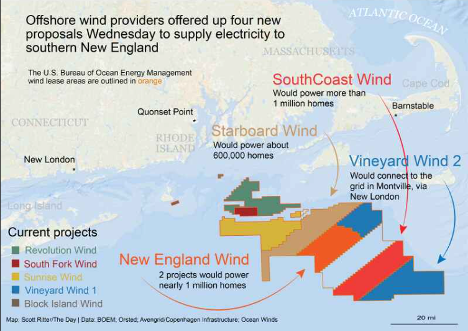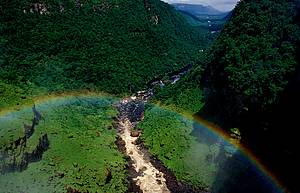Energy Grid Could Make Offshore Wind Power More Reliable


Scientists believe that natural resources can meet the energy needs of the entire human population. Wind energy too has huge potential to generate power for us. Researchers are trying to trap offshore wind power. But there are still many hiccups that are preventing us from utilizing natural resources for our needs. Wind turbines produce intermittent power because the direction and strength of the wind varies. Scientists are trying to generate more or less consistent power from offshore winds.
The researchers are focusing their efforts on more consistent offshore wind power supply. They are of the view that production of energy can be more consistent if project locations can be chosen by observing regional weather patterns. They are also proposing to connect the wind power generators with a shared power line. The fund was provided by the Delaware Sea Grant College Program and CAPES, a Brazilian research council.
Researchers from the University of Delaware and Stony Brook University are trying to generate a steady power supply from offshore winds. They have published their work in the Proceedings of the National Academy of Sciences. The members of the research team are UD alumnus Felipe Pimenta, UD research faculty member Dana Veron, and Brian Colle, associate professor in the School of Marine and Atmospheric Sciences at Stony Brook University. Willett Kempton is the UD professor of marine policy in the College of Earth, Ocean, and Environment and director of its Center for Carbon-free Power Integration. Willett Kempton the lead author of the paper, says, “Making wind-generated electricity more steady will enable wind power to become a much larger fraction of our electric sources.” The research team presented various designs of how offshore wind power projects can reduce the nuisances of local weather on power fluctuations.
The researchers analyzed five years of wind observations from 11 monitoring stations along the U.S. East Coast from Florida to Maine. Based on wind speeds at each location, they estimated electrical power output from a hypothetical five-megawatt offshore turbine. After analyzing the patterns of wind energy among the stations along the coast, the team explored the seasonal effects on power output. Kempton talks about his work, “Our analysis shows that when transmission systems will carry power from renewable sources, such as wind, they should be designed to consider large-scale meteorology, including the prevailing movement of high- and low-pressure systems.”
Scientists are working on this project for the last five years. They have never found the power output of their simulated grid to come to a standstill in this time period. The researchers created their own hypothetical power generation site. They showed power fluctuations too like any wind based powerhouse. But when they simulated a power line connecting grids, they received a steady power supply without extremes. Until now the USA doesn’t have any offshore energy plants. But many are in the pipeline waiting to be implemented off the coasts of many Atlantic states. These proposed projects can take help in the selection of sites. Colle talks about the ideal configuration. “A north-south transmission geometry fits nicely with the storm track that shifts northward or southward along the U.S. East Coast on a weekly or seasonal time scale,” he said. “Because then at any one time a high or low pressure system is likely to be producing wind (and thus power) somewhere along the coast.”









